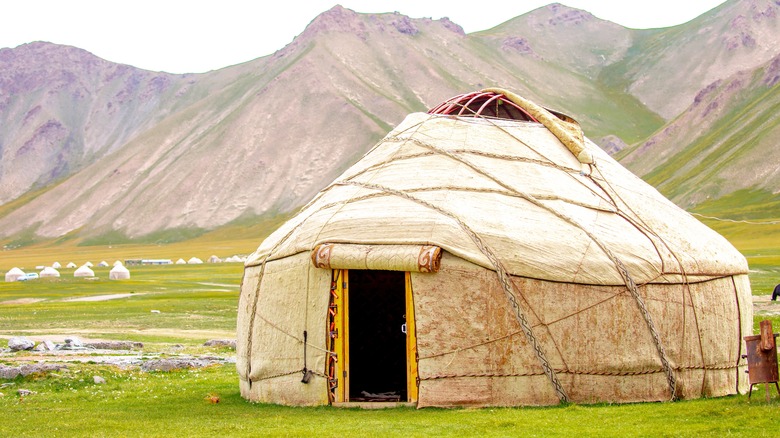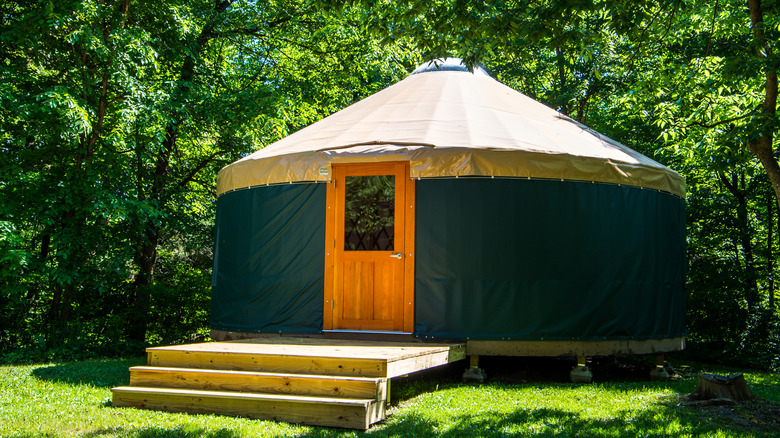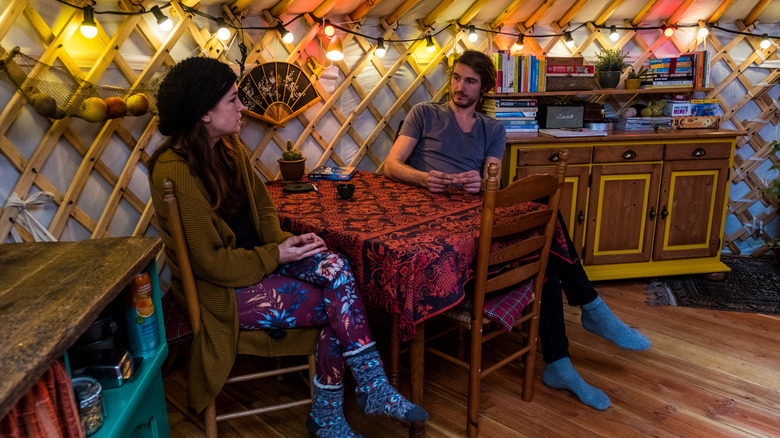Can You Live In A Yurt? Here's How To Make This Tiny Home Option Work
Living in a yurt gives you the option to take on the tiny house lifestyle. If you can picture a sturdier form of glamping but on a more permanent basis, then you have a yurt. Plus, if you need to uproot, you still have the ability to pack up and move, though it's not as easy and fast as packing up a tent. This type of abode needs to be set up on a solid platform made from concrete, wood, or other strong material, which serves as the floor but also holds the yurt in place. The material construction of the yurt is heavy and can withstand strong winds, but this added security ensures that your house won't blow away in a storm.
When considering a yurt as your new home, you might wonder how it might work out. Can you have the same comforts as in a permanent structure? Where would you even build a yurt? We'll dig deeper into the viability of yurt living to see what is involved in this minimalistic way of life.
Find the right location
For the most part, the minimalist lifestyle that goes along with living in a yurt translates into finding an off-the-grid area to construct it. Just how rural that is, depends on your comfort level, your choice of energy sources, and the sweat equity that you're willing to put into your new dwelling.
To give you a better idea of where you can place your yurt, many communities might not have permits or regulations in place that allow you to have a yurt in a residential area, however, this can often be circumvented if someone has a nominal amount of acreage that they're willing to rent out.
Another alternative is to find campgrounds that allow extended stay, as most parks won't let you stay there year-round. Alternatively, if you plan on staying planted for a few years, you can buy a small lot for your yurt so long as the area is fairly level and in a location where you won't have to worry about flooding.
Customize your yurt
Just like any other type of dwelling, you can add amenities to your yurt to suit your needs. Many yurts, for instance, come in different sizes with some being as large as 490 square feet and others having multiple rooms. One tip to keep in mind, however, is to have as few items as possible inside the yurt. Otherwise, the space could feel rather crowded and uncomfortable. Plus, having too many furnishings would defeat the purpose of this lifestyle which is to pare down your possessions.
If you feel the need to spread out a bit, you can utilize the outdoor area that surrounds your yurt. Just like a yard or a deck can be an outdoor extension of a house, the lot on which your yurt is located gives opportunities for setting up simple, relaxing seating areas complete with shade and a place to cook in the evening if you like — just be aware of any fire-related regulations.
It is possible to heat and cool your yurt using electricity, depending on your location. Furthermore, professional contractors can get your home connected to the local utilities if you don't want to live completely off the grid. On the other hand, you can look at different power sources like wood (for a stove or heater) or portable solar panels.


